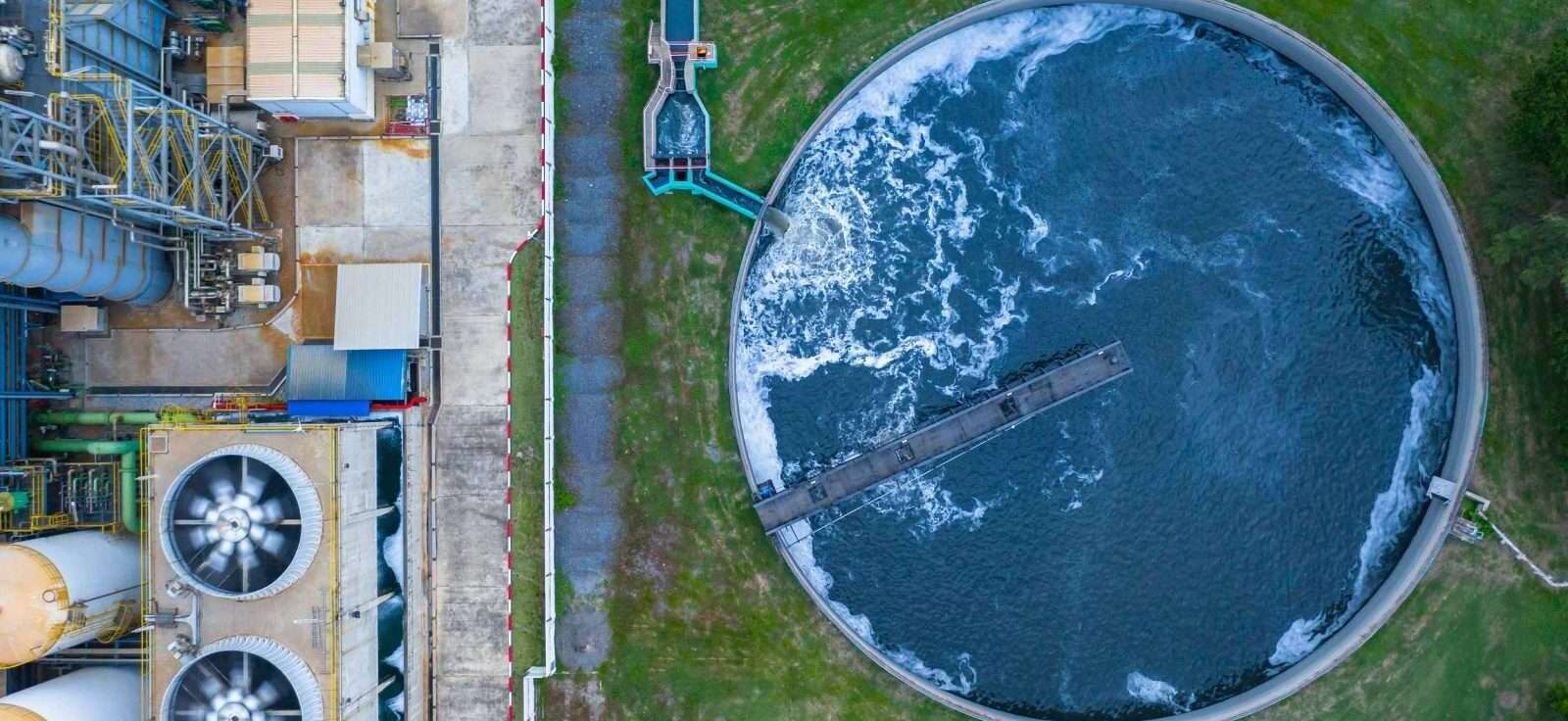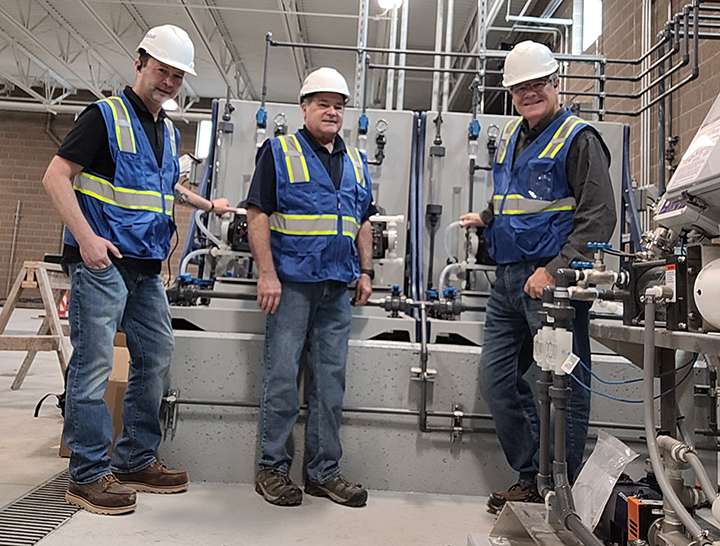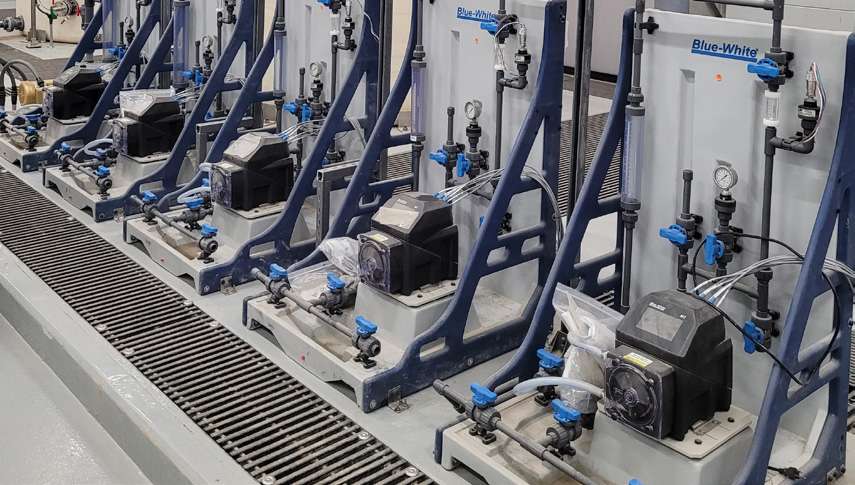Chemical Metering Pumps are essential components in any water treatment system, whether it be for drinking water, public wastewater, or industrial effluent disinfection. There are many different pump technologies, although the two most common types for chemical metering are peristaltic and diaphragm pumps (Figure 1). Both types of pumps will be found in a water treatment system, and each has its own unique benefits and drawbacks.
Unfortunately, it’s also common to find diaphragm pumps used in applications where a peristaltic pump is a better fit, and vice versa. Sometimes this is the result of misunderstanding the benefits of a particular technology; other times it can be due to a misreading of the spec sheet.
Then there are applications where neither type of pump is an ideal fit. Such situations are more common than many realize. Thankfully, there is multi-diaphragm pump technology which can fit these applications very well. Determining which type of pump best suits the situation requires a detailed breakdown of the technologies, their benefits, and their limitations.
Overview Of Diaphragm And Peristaltic Pumps
A diaphragm pump uses a flexible membrane connected to a shaft, which creates a separation between compressed air and the fluid being pumped. A motor connected to a cam alternately pushes and pulls the membrane. The inward motion creates a vacuum for suction, while the outward motion creates discharge.
The diaphragm pump design is energy-efficient and generally
costs less to operate in the long run. They are commonly used in areas where budgets are tight, including water treatment plants in small municipalities throughout the developed world and in developing countries.
Diaphragm pumps work well under pressure and handle a range of liquids, although they are ideal for clear, stable chemicals. They can run at a variety of pressures and at either low or high flow rates, although with some limitations (see below).
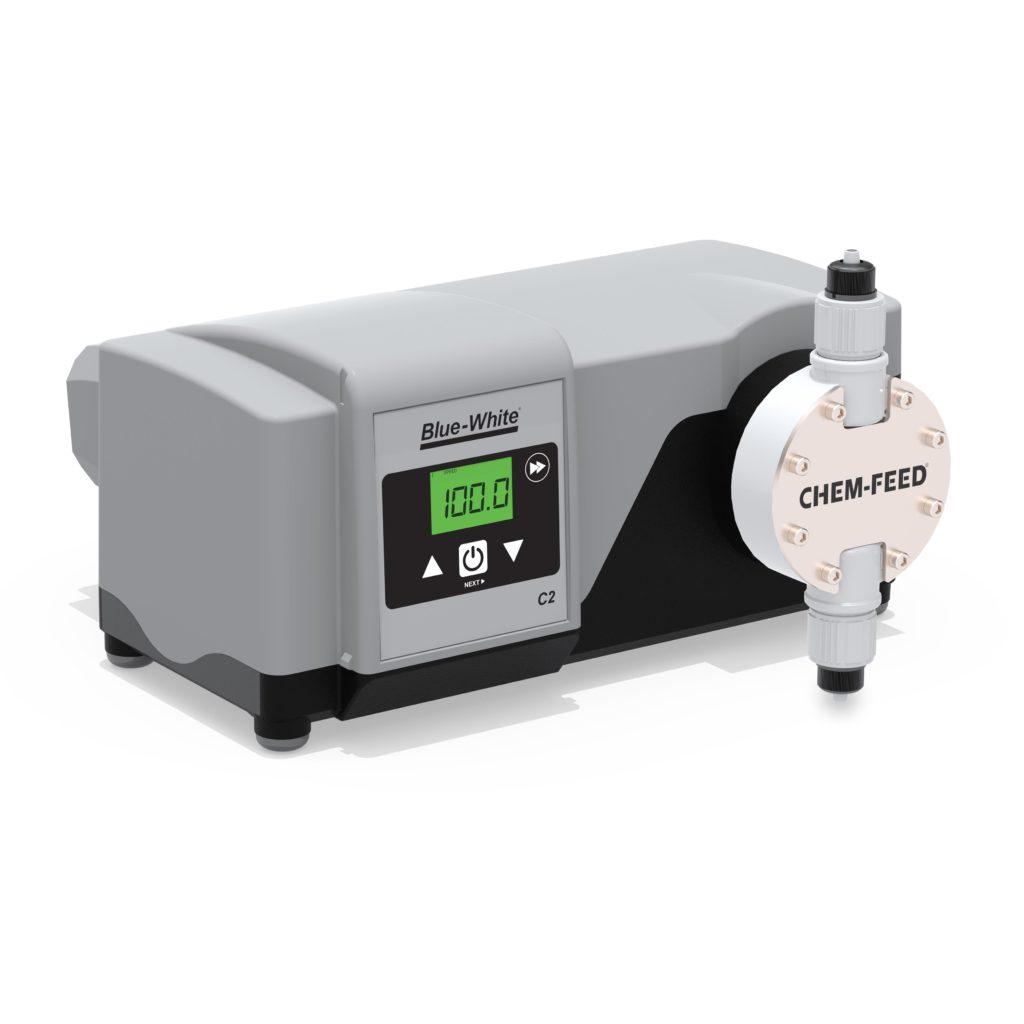
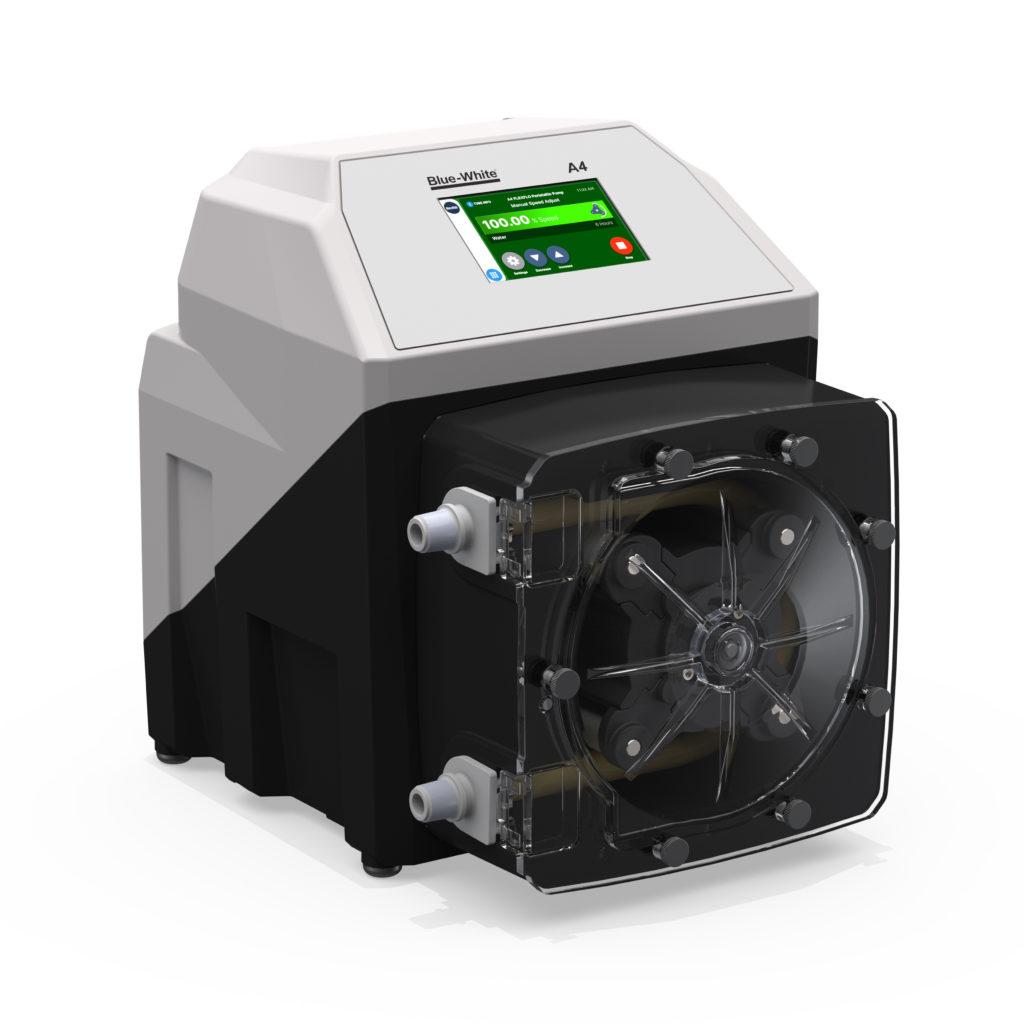
With a peristaltic pump, fluid is fed through a hose or tube using rollers or a similar mechanism that squeezes the hose to move the liquid. As the tube is released, it creates a vacuum that pulls more liquid into the hose, and the process repeats. Peristaltic pumps are sometimes called hose pumps or tube pumps.
Depending on the material makeup of the tube, a peristaltic pump can handle more difficult chemicals than a diaphragm pump, such as viscous liquids and liquids with high solids content. They also work exceptionally well with fluids that off-gas. Peristaltic pumps require minimal maintenance — only the tube must be changed occasionally, and there are no valves to clean as in a diaphragm pump.
Many mid-to-large water treatment plants run these pumps. A peristaltic pump can be placed at a higher elevation than the water tank, due to its strong suction lift. They operate well at low speeds and have a steady flow rate.
Limitations Of Peristaltic And Diaphragm Pumps
Diaphragm pumps have several limitations. The valves must be regularly maintained. While this is not costly, it does require labor and downtime to perform. Liquids with high solids content can clog the pump, leading to additional downtime.
While diaphragm pumps operate well at high speeds, they can cause water hammering, which could damage the pump and downstream infrastructure. This can be compensated for by performing a stroke adjustment which reduces the piston movement. However, the reduced stroke can leave the pump underpowered and cause vapor locking, as the diaphragm is no longer being pushed into the entire cavity, allowing air to compress and inhibiting flow.
Peristaltic pumps have pressure limitations, they are typically limited to a maximum pressure of 125 psi. A common problem with these pumps is that they are often run at the maximum flow rate and pressure listed on the spec sheet. Doing this for a long period of time will quickly wear out the tube, causing unnecessary downtime and potentially reducing the life of the pump.
Multi-diaphragm Pumps Bridge The Gap
A multi-diaphragm pump is a more recent design that can solve several problems traditional diaphragm and peristaltic pumps cannot resolve alone. It utilizes two membranes connected through a central shaft. This shaft pulls one membrane to create suction while simultaneously pushing the other membrane to discharge liquid. The pushpull combination creates a smooth flow that allows the pump to run at high speeds without water hammering.
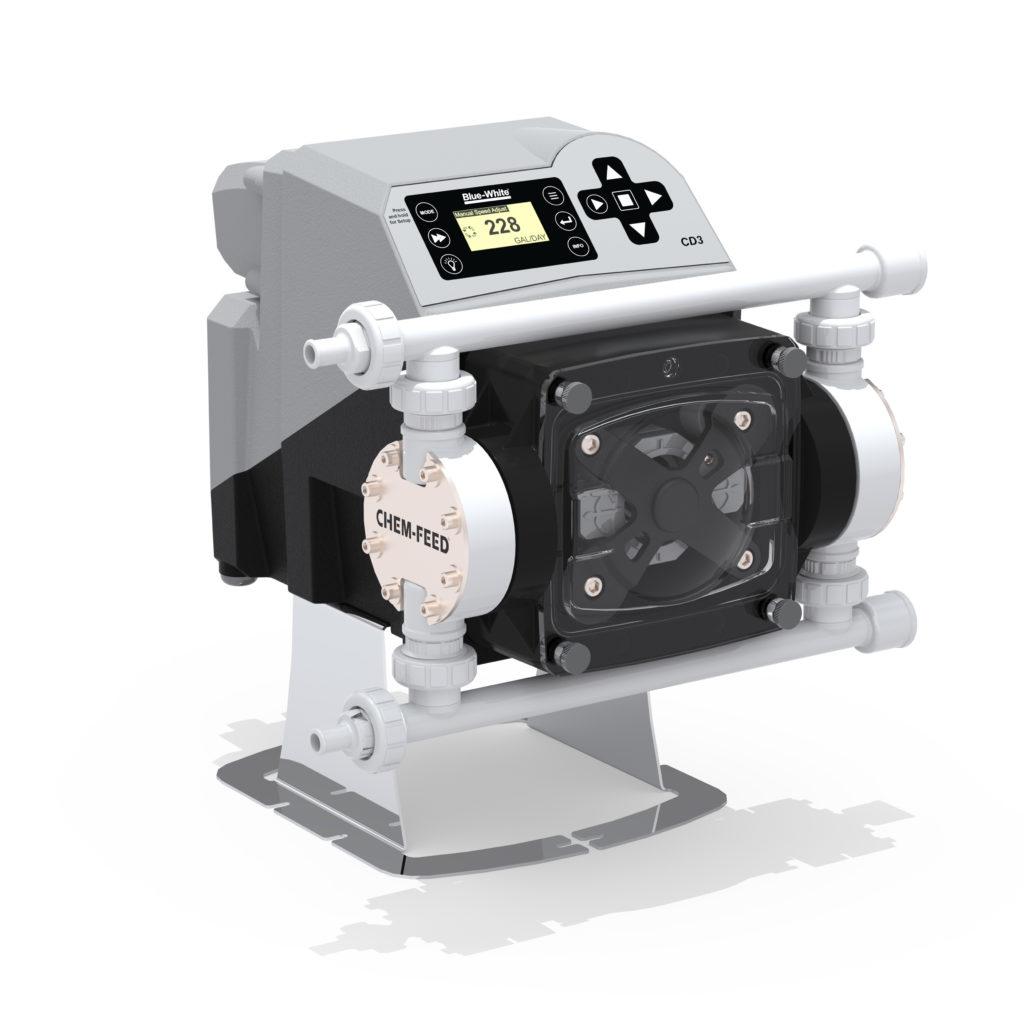
The dual push-pull action also means the pump is resistant to vapor lock, allowing it to handle offgassing chemicals. Blue- White’s exclusive DiaFlex® diaphragm that allows for use with aggressive chemicals, such as peracetic acid and sodium hypochlorite.
The cost of multi-diaphragm pumps is comparable to regular diaphragm pumps. Operators should keep in mind that these are still diaphragm pumps, and regular maintenance is required. However, if they are maintained well, a multidiaphragm pump should provide quality performance for a long time.
Blue-White manufactures a full line of peristaltic metering pumps, including FLEXFLO A4. A4 Peristaltic will accurately deliver chemical at discharge pressures up to 125 PSI. The five-inch touchscreen control pad is as simple to use as a cell phone and can be operated while wearing work gloves. A4’s IP-rated M12 connection ports protect against moisture, dust, vibration, and temperature changes.
A4 remote control signal options include Pulse, 4-20mA, Modbus TCP, EtherNet IP, and PROFIBUS for enhanced supervision and automation for critical metering and transfer applications.
If a diaphragm pump is more suited to the installation, consider the CHEM-FEED C2/C3 chemical feed pumps. CHEM-FEED® MC2/MC3 Diaphragm Metering Pump delivers accurate chemical feed quietly and efficiently against high system pressures. With an easy-to-read LCD user interface and pulse/frequency/4-20 mA input capability, the CHEM-FEED® MC pumps have the power and flexibility you need to take control of your fluid management process.
The MC’s exclusive DiaFlex® Diaphragms will last the life of the pump, eliminating the need for expensive rebuild kits.
Blue-White’s CD3 dual diaphragm metering pumps include the company’s exclusive hyperdrive technology. This dual diaphragm Hyperlink Drive Technology operates so that when the first diaphragm is in the suction phase, the second diaphragm is in the discharge phase, creating smooth steady fluid flow.
Blue-White CHEM-FEED Dual Diaphragm pumps are engineered for near-zero maintenance, including the patented ultra-durable diaphragm, called DiaFlex®. The innovative single piece DiaFlex® diaphragm is manufactured 100% in-house and is designed to last the life of the pump.
Whichever Blue-White metering pump you choose, you know you’re getting a top line product that’s cost effective, simple to install and easy to operate.
Written by:
Blue-White® Industries
714-893-8529
